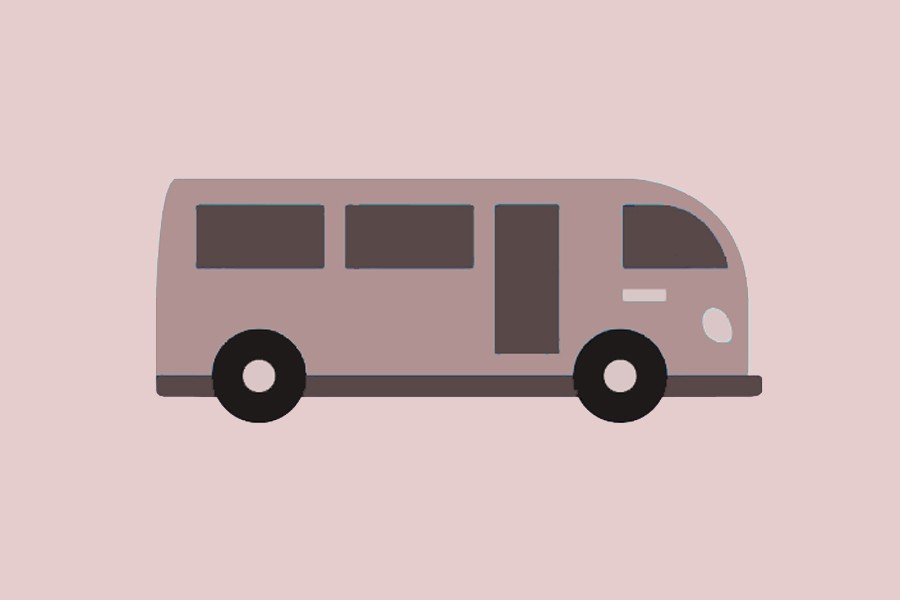With rapid urbanisation, one way to make public transportation system more efficient is the introduction of feeder bus service in a big city like Dhaka. Policymakers need to think about feeder bus service while they plan to fix the problem of public transport in the capital city.
Generally, feeder bus service is designed to pick up commuters in a certain place and take them to a point of transfer. From this point, they make an onward journey on another bus or other vehicles like train, ship or even aeroplane. Under the service, dedicated buses also transfer passengers from these points to a certain place within the city. The basic idea is to transfer a large number of people from one place to another place at a time by saving their time and money.
From Dhaka, a good number of people take their travels to different places of the country by inter-district long-route buses, inter-city trains, domestic airlines and launches (river ships). These vehicles are also used to bring people from different parts of the country. As a result, everyday a large number of people gather in the Kamalapur Railway Station, Sadarghat River Port, Hazrat Shahjalal International Airport and the main inter-district bus terminals in Syadebad, Mohakhali and Gabtoli in the city.
For most of the people, reaching to or return from the rail station or airport or river port is costly and stressful trips. They have to rely on rickshaws, CNG-run auto-rickshaws, hired cars and micro-buses and also regular buses passing through the points. Feeder bus service can easily reduce the hassles of the commuters in this regard and ease the congestions.
Take the example of Kamlapur Railway Station. Everyday thousands of people from different parts of the country arrive here. But this is not the last-mile connectivity as they have to go to different parts of the city and its suburbs. Feeder buses from the rail station can easily transfer the passengers to nearby places like Gulistan, Mothijheel and Saydebad. From these places, people can take other vehicles to make short journeys onwards to their destinations. In a similar vein, feeder bus can connect Tejgaon railway station with nearby Mohakhali and Farmgate bus stoppages. For both the domestic and international passengers, feeder buses linking the Dhaka airport with a few places will also be beneficial.
Passengers who arrive in Sadarghat Port on the Burignaga river in Dhaka usually face a very chaotic situation while looking for vehicles to reach their final destination. Bangladesh Road Transport Corporation (BRTC) tried to introduce a kind of feeder bus service from Sadarghat to Tongi in a limited scale. Titled as Usha (early morning) service, three buses were scheduled to start at 5:00 am, 5:30 am and 6:00 am everyday from Sadarghat to Tongi via different points of the city. While the commuters appreciated the service, it could not be continued due to resistance from private bus owners. Nevertheless, the Usha service showed that feeder bus service is a need of the time in Dhaka. Several long-route private bus operators are already providing feeder bus service, shuttle bus service to be accurate, for their passengers currently.
The Delhi Metro Rail Corporation (DMRC) in India has introduced feeder bus service for the metro rail passengers. There are 500 mini buses on the fleet now and another 500 will be added by the end of this year. This is an example of modern management to enhance the facility of e public transport. Dhaka is likely to see metro rail within two to three years. Will there be a provision of a feeder bus service as in New Delhi?


